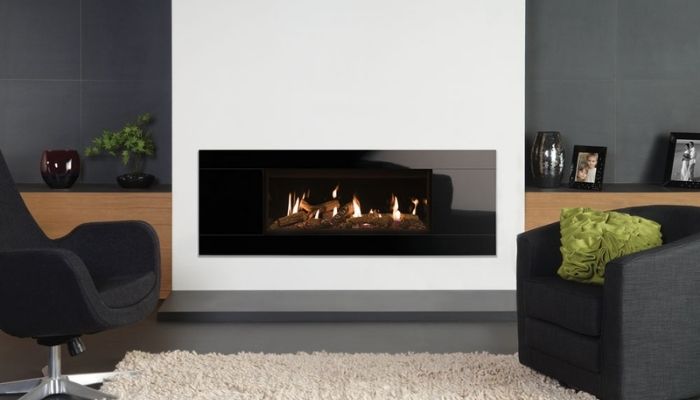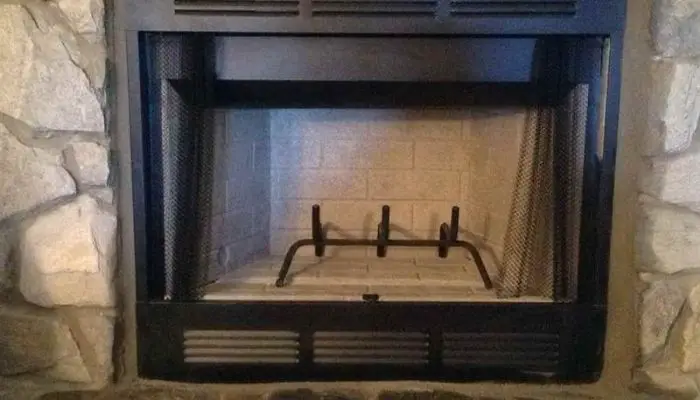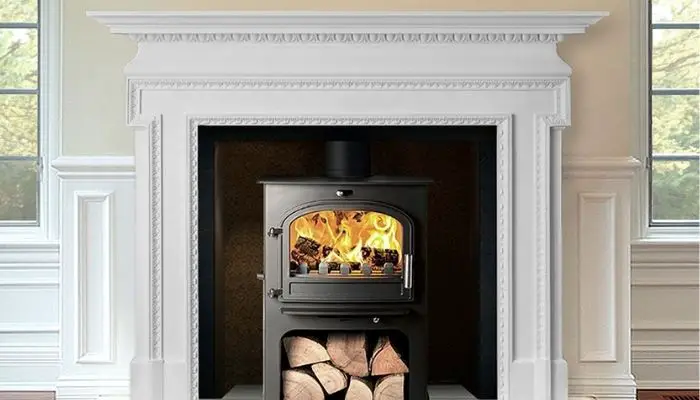All fireplaces radiate heat, but what can you do so that your fireplace radiates more heat. You can compare a fireplace to a car engine. There are a few things you can do to your car engine to give you more power and speed. A fireplace also has a few strategies you can use to give you more heat.
Yes, big fire flames mean more heat, but how do you contain the heat to stay for long. This article will inform you on how you can increase the heat on your fireplace while at the same time containing it for a long. The chimney is where most heat is lost. The strategies below will tell you how to reduce the heat that is lost through the chimney.
- Use dry wood
First of all, what is dry wood? Dry wood is any piece of firewood with a moisture content of less than 20%. Dry wood will require less energy to burn up hence more heat is released into the room. Then how do you know that wood is dry? You can look at the physical signs like the green color and recently cut wood.
A moisture meter is a perfect device to determine the amount of moisture in the wood. This device will tell you the exact amount of moisture in the wood. Wet wood produces lots of smoke, holding down the heat. You will hear a hissing sound when you are using wet wood.
2. Consider using hardwoods
Both hardwoods and softwoods can produce heat, but hardwoods will give off a better amount of heat. The high amount of grains in hardwoods makes them denser than softwoods. Moreover, Softwoods have a lot of sap and can produce hotter flames over a short period. Hardwoods will burn slowly but over a longer period.
Just use the softwoods to start the fire, then add hardwoods to burn slowly. Hardwoods take longer to grow than softwoods. This is why hardwoods are expensive. Hardwoods will also take longer to dry.
3. Clean the chimney
Soot and creosote accumulate in the chimney when you use a fireplace for a long time. These particles reduce the diameter of the chimney, making it draw in less oxygen to the firebox. Less oxygen means the fireplace will produce less heat. Clean the chimney to give a chance for the hot air to go out, and fresh air is drawn into the firebox.
Clean your chimney at least twice a year. Please note that creosote is a flammable substance that can lead to chimney fires. Softwoods like pine are the ones that accelerate the build-up of creosote. Cleaning a chimney is a hard task that you should leave to experts.
4. Always open the damper.
The damper is the part that controls the airflow in the chimney. It is found immediately below the neck of the chimney. You can manually open or close it. Open the damper for maximum airflow in the chimney; your fireplace will produce more heat. With maximum airflow, the rate of combustion will be high.
5. Maximum ventilation
Hot air and smoke leave through the chimney creating pressure that draws in fresh air from the room. Ventilate your room, and you will have a continuous flow of fresh air hence more heat from the fireplace. Lack of ventilation in the room can be dangerous and can create a vacuum.
6. Keep the fire burning.
First, make sure you properly start the fire before you try to keep it burning. Use fire starters to ignite the fire, so it spreads quickly. Once the fire is up and burning, add more logs to maintain the high amount of heat. Do not add too many logs because they can choke down the fire.
Lay the logs in a crisscrossing manner because it helps with maximum airflow. And good airflow leads to high combustion and hotter flames. Do not add the logs when the fire has started to smolder because it will take time to ignite the flames. Lots of smoke is never a good sign in a fireplace.
7. Proper fireplace maintenance
Service your car within time, and it will always give you more power and speed. The same applies here; keep your fireplace in perfect condition, and it will give off more heat. The first maintenance tip is cleaning the fireplace. Always remove the previous ash before you start a fresh fire.
Another research shows that a layer of ash on the fireplace base helps with combustion. The layer of ash will act as an insulator and prevent heat loss through the firebox floor. So do not clean out all of the ash.
Conclusion
Maximum airflow is the solution to more heat from your fireplace. To achieve maximum airflow, you must keep the damper open, clean the chimney and ventilate your room. Always add wood to the fire before it starts smoldering, and the room will remain hot. Use dry pieces of wood and consider using hardwoods for more heat.


